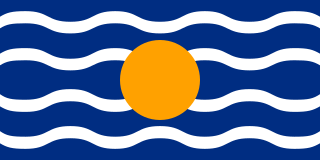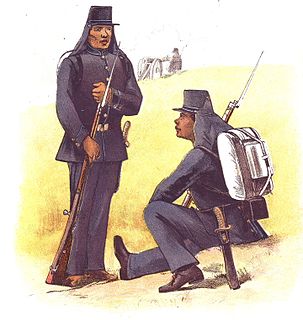
The Lesser Antilles are a group of islands in the Caribbean Sea. Most of them are part of a long, partially volcanic island arc between the Greater Antilles to the north-west and the continent of South America. The islands of the Lesser Antilles form the eastern boundary of the Caribbean Sea where it meets the Atlantic Ocean. Together, the Lesser Antilles and the Greater Antilles make up the Antilles. The Lesser and Greater Antilles, together with the Lucayan Archipelago, are collectively known as the West Indies.

The West Indies Federation, also known as the West Indies, the Federation of the West Indies or the West Indian Federation, was a short-lived political union that existed from 3 January 1958 to 31 May 1962. Various islands in the Caribbean that were colonies of the United Kingdom, including Trinidad and Tobago, Barbados, Jamaica, and those on the Leeward and Windward Islands, came together to form the Federation, with its capital in Port of Spain, Trinidad and Tobago. The expressed intention of the Federation was to create a political unit that would become independent from Britain as a single state—possibly similar to the Canadian Confederation, Australian Commonwealth, or Central African Federation; however, before that could happen, the Federation collapsed due to internal political conflicts over how the Federation itself would be governed or how it would viably function. The formation of a West Indian Federation was encouraged by the United Kingdom, but also requested by West Indian nationalists.

The Virginia Capes are the two capes, Cape Charles to the north and Cape Henry to the south, that define the entrance to Chesapeake Bay on the eastern coast of North America.

Tortuga Island is a Caribbean island that forms part of Haiti, off the northwest coast of Hispaniola. It constitutes the commune of Île de la Tortue in the Port-de-Paix arrondissement of the Nord-Ouest department of Haiti.
Dick Rathmann was an American race car driver.
Sam Hanks was an American racecar driver who won the 1957 Indianapolis 500. He was a barnstormer, and raced midget and Championship cars.
The Danish West India Company or Danish West India–Guinea Company was a Dano-Norwegian chartered company that operated out of the colonies in the Danish West Indies.

Joan Maetsuycker was the Governor of Zeylan during the Dutch period in Ceylon and Governor-General of the Dutch East Indies from 1653 to 1678. He was appointed as Governor of Zeylan on 24 March 1646 and was governor until 26 February 1650. He was succeeded by Jacob van Kittensteyn.

The Commonwealth Caribbean is the region of the Caribbean with English-speaking nations and territories, which once constituted the Caribbean portion of the British Empire and are now part of the Commonwealth of Nations. The term includes many independent island nations, British Overseas Territories and some mainland nations. It is also known as the English-speaking Caribbean,Anglophone Caribbean or Anglo-Caribbean. The term is now used in preference over the older term British West Indies, which was used to describe the British colonies in the West Indies during decolonisation and following independence from the United Kingdom. Anglo-Caribbean and British Commonwealth Caribbean also became preferred replacement terms to British West Indies.

The Guyana cricket team is the representative first class cricket team of Guyana.

The West Indies cricket team, nicknamed the Windies, is a multi-national men's cricket team representing the mainly English-speaking countries and territories in the Caribbean region and administered by Cricket West Indies. The players on this composite team are selected from a chain of fifteen Caribbean territories, which are parts of several different countries and dependencies. As of 10 March 2020, the West Indies cricket team is ranked eighth in the world in Tests, ninth in One-Day Internationals (ODIs) and ninth in Twenty20 Internationals (T20Is) in the official International Cricket Council (ICC) rankings.

The Dutch Gold Coast or Dutch Guinea, officially Dutch possessions on the Coast of Guinea was a portion of contemporary Ghana that was gradually colonized by the Dutch, beginning in 1612. The Dutch began trading in the area around 1598, joining the Portuguese which had a trading post there since the late 1400s. Eventually, the Dutch Gold Coast became the most important Dutch colony in West Africa after Fort Elmina was captured from the Portuguese in 1637, but fell into disarray after the abolition of the slave trade in the early 19th century. On 6 April 1872, the Dutch Gold Coast was, in accordance with the Anglo-Dutch Treaties of 1870–71, ceded to the United Kingdom.

The West Indies are a subregion of North America, surrounded by the North Atlantic Ocean and the Caribbean Sea that includes 13 independent island countries and 18 dependencies and other territories in three major archipelagos: the Greater Antilles, the Lesser Antilles, and the Lucayan Archipelago.

The Spanish West Indies or the Spanish Antilles were Spanish colonies in the Caribbean. In terms of governance of the Spanish Empire, The Indies was the designation for all its overseas territories and was overseen by the Council of the Indies, founded in 1524 and based in Spain. When the crown established the Viceroyalty of New Spain in 1535, the islands of the Caribbean came under its jurisdiction.

A Residency was an administrative division of:

Belanda Hitam were a group of African recruits in the Royal Netherlands East Indies Army during the colonial period.
In 1781, Great Britain declared war on the Dutch Republic, opening the Fourth Anglo-Dutch War. As part of its offensive strategy, the British organized an expedition against Dutch colonial outposts on the Gold Coast of Africa. Captain Thomas Shirley led the expedition, commanding HMS Leander and several transports carrying two small regiments of independently raised troops under the command of Captain Kenneth Mackenzie of the 78th Foot.
The sponge oyster, Cryptostrea permollis, is a species of bivalve mollusc in the family Ostreidae. It can be found along the Atlantic Coast of North America, ranging from North Carolina to the West Indies.

The Danish slave trade occurred separately in two different periods: the trade in European slaves during the Viking Age, from the 8th to 10th century; and the Danish role in selling African slaves during the Atlantic slave trade, from the 1600s until a 1792 law to abolish the trade came into effect on 1 January 1803. Slavery continued in the Danish West Indies until July, 1848, when all unfree people in Danish lands were emancipated.

West Indiaman was a general name for any merchantman sailing ship making runs from the Old World to the West Indies and the east coast of the Americas. These ships were generally strong ocean-going ships capable of handling storms in the Atlantic Ocean. The term was used to refer to vessels belonging to the Danish, Dutch, English, and French West India companies.














